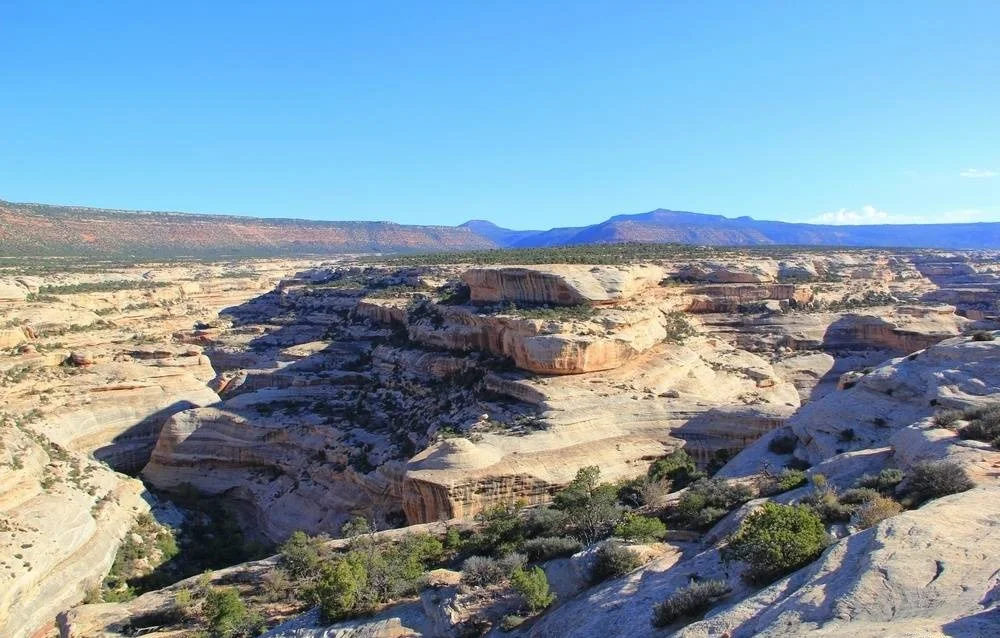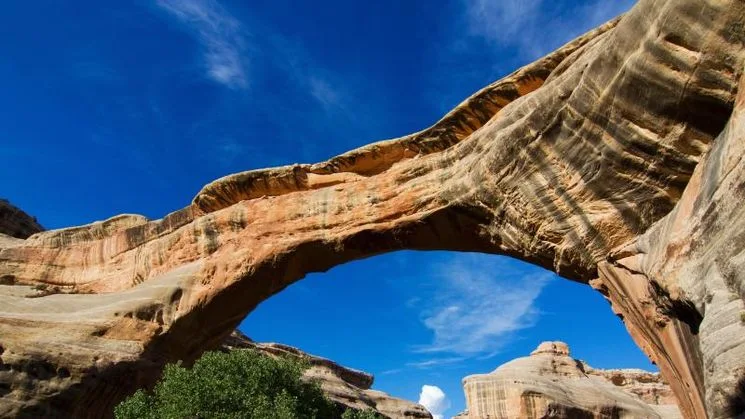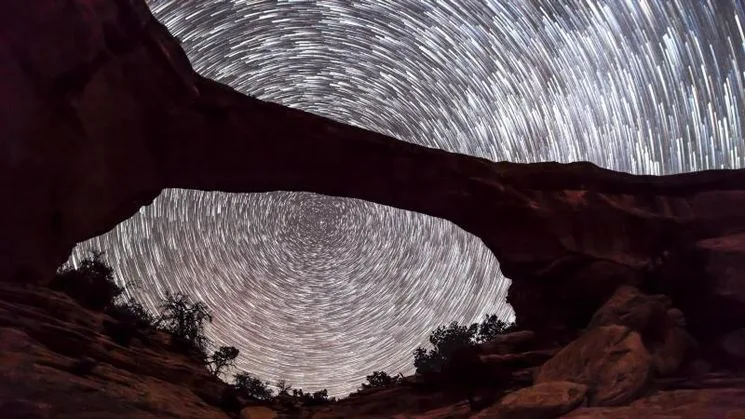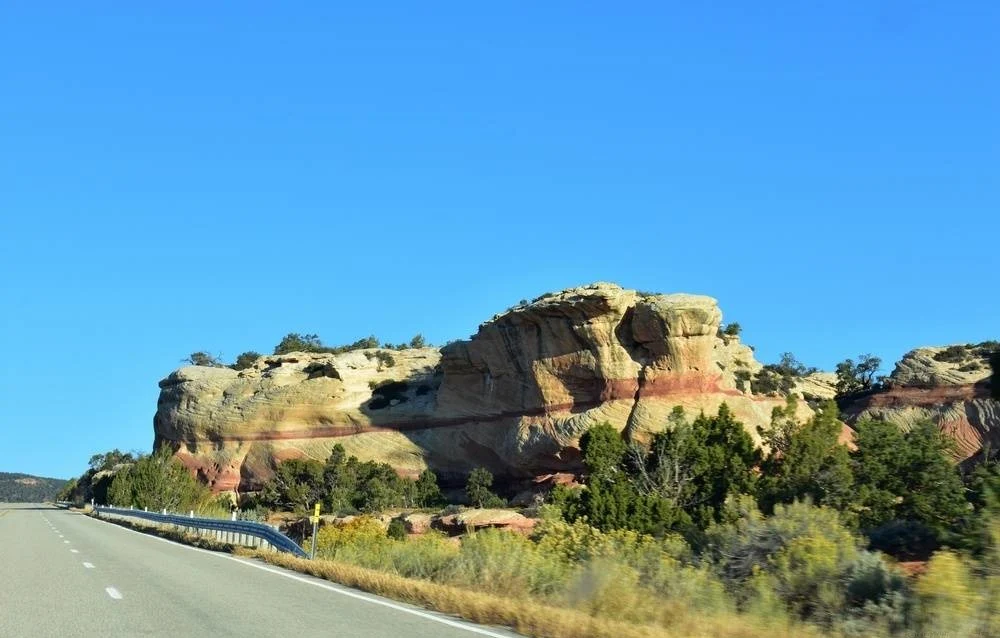The Natural Bridges National Monument was one of the best surprises we encountered on our trip through Utah's national parks.
 |
| Natural Bridges National Monument |
This park was named as a "National Monument" in 1908, thus becoming the first national monument in the state of Utah.
Interestingly, the magazine "National Geographic" advertised this place in 1904, before being named as a National Monument.
 |
| Natural Bridges National Monument |
Visit The Natural Bridges
The Utah Natural Bridges National Monument consists of a 14-kilometer, one-way scenic highway that runs through the upper canyon, leaving the bridges lower.
There are parking lots in the access areas to each bridge and several viewpoints to be able to see them from afar.
How Are These Natural Bridges Formed?
These natural bridges of Utah are formed by the erosion created by the water that flows through the canyons. The water collides with the walls of the rocks that form the meanders, and over time a hole opens. Through this hole the water begins to flow, making the hole bigger and bigger with erosion and creating these bridges.
The park is located at the crossroads of "White Canyon" and "Armstrong Canyon", which just meet at the Kachina Bridge.
 |
| Natural Bridges National Monument |
General Information For Your Visit
Entrance: The entrance to the park is priced at $ 20 per vehicle. Remember that in national parks you pay per car and not per occupants, you will pay the same if you are 2, 3 or 4 people in the car.
Admission is also included in the "America the Beautiful" National Parks Annual Pass. Take a look at this voucher if you are going to visit several parks.
Timetable: the park is open 24 hours, so you can go whenever you want.
What does have a schedule is the visitor center, which is usually open from 09:00 to 17:00. In winter (October to March) the visitor center is closed Tuesday and Wednesday.
 |
| Natural Bridges National Monument |
Description
Natural Bridges National Monument is located approximately 50 miles (80 km) northwest of the southeastern Utah border. Geographically, it is located at the junction of the famous White Canyon and Armstrong Canyon and is part of the drainage of the Colorado River. It is considered the second largest natural bridge in the world.
Like a bridge carved out of white sandstone, it gave its name to the entire canyon. It is believed that the stream washes away the walls of the rock that separate the meanders of the stream, which forms a natural gully, framed by end walls. Such creations of nature, unfortunately, are relatively short-lived. The bridge will collapse under its own weight. There are at least two examples of such a sad collapse.
In 1904, National Geographic magazine published a photo of Natural Bridges, and on April 16, 1908, Natural Bridges was declared a national monument by President Theodore Roosevelt. It is the first national monument in Utah.
For many years, the monument was almost inaccessible to tourists: few people could endure a three-day horseback ride from Blanding, Utah. Found and developed uranium mines helped to revive these places, which caused the massive construction of roads and other infrastructure. Today you can look at the unique bridge with comfort.